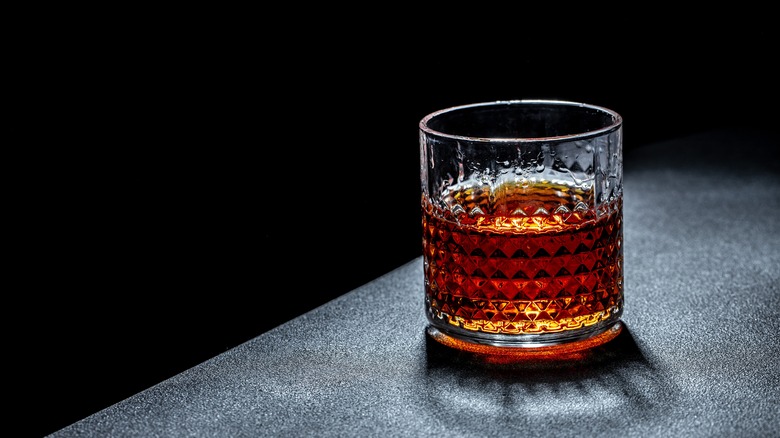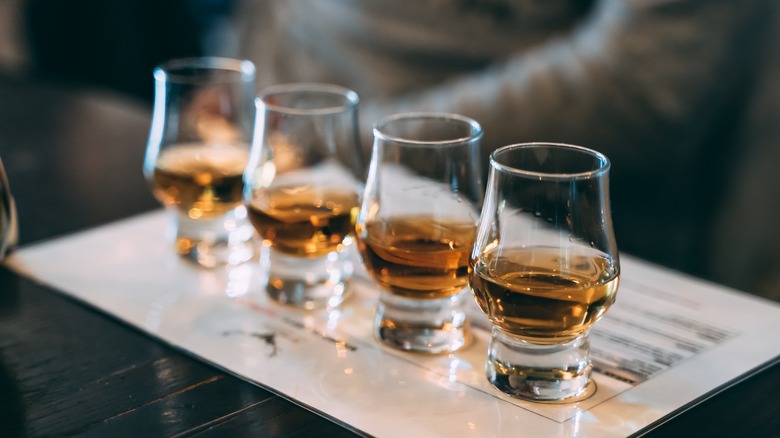How To Order Scotch Like You Know What You're Doing
For those new to the world of whisky, it can feel like there is a secret society of Scotch drinkers with their passwords and rituals based on all of the unique vocabulary and imbibing practices associated with this particular type of alcohol. Rather than feel intimidated, try to embrace the fun of saying words like "dram," "snifter," and "peaty." Knowing the meaning of terms like these is a good start for ordering Scotch like a pro.
A "dram" is a measurement frequently used when ordering whisky. Though it can vary from place to place, 1.5 ounces or 44 milliliters is generally considered a standard pour of a dram. Your dram of whisky will likely come served in a "snifter," a teardrop-shaped glass with a short stem, a wide base, and a narrow mouth. The "peaty" flavor or aroma of a Scotch refers to a kind of smokiness found in certain whiskeys. This is because a natural material known as "peat" has historically been used in Scotland to fuel fires for drying the malted barley that is the core ingredient of Scotch.
The importance of water with whisky
There are two classic ways to order whisky: "neat" or "on the rocks." Order whisky neat and you'll receive a glass of room-temperature whisky, plain and simple. If you're looking for a chilled drink, order your whisky on the rocks, which is with ice. Most often the ice will take the shape of one large cube or sphere, rather than several ice cubes. The ice can soften the harsh burn of the alcohol, but it also dampens some of the flavor.
To best enjoy the unique flavors of a quality Scotch, order it neat and ask for your bartender's advice on dilution. Depending on the kind of whisky, it may benefit from the addition of a few drops of water. While the chill and dilution of a sizable ice cube can water down the taste of whisky, a sprinkle of water will "open up" your drink, enhancing its flavors and aromas, especially when it comes to younger whiskeys.
Understanding where your whisky comes from
To truly understand Scotch, it helps to first understand the difference between whiskey and whisky. The spelling depends on where the alcohol was produced and, when it comes to Scotch, the latter term (without the "e") is used. Just like all champagne must be produced in France, all Scotch must be made in Scotland. But just because all single malt Scotch whisky is made with the same ingredients — barley, water, and yeast — they do not all taste the same.
Though Scotland is a relatively small country, its whisky can vary widely from one coast to the other. For this reason, it's important to also understand some of the differences between Scotland's whisky regions. There are five main Scotch whisky regions, though some also consider the Scottish islands as their own separate region. You don't need to memorize the flavor profiles of each region but keep in mind the kinds of flavors you like in a drink — such as smoky, fruity, or floral — and your bartender can help guide you.



